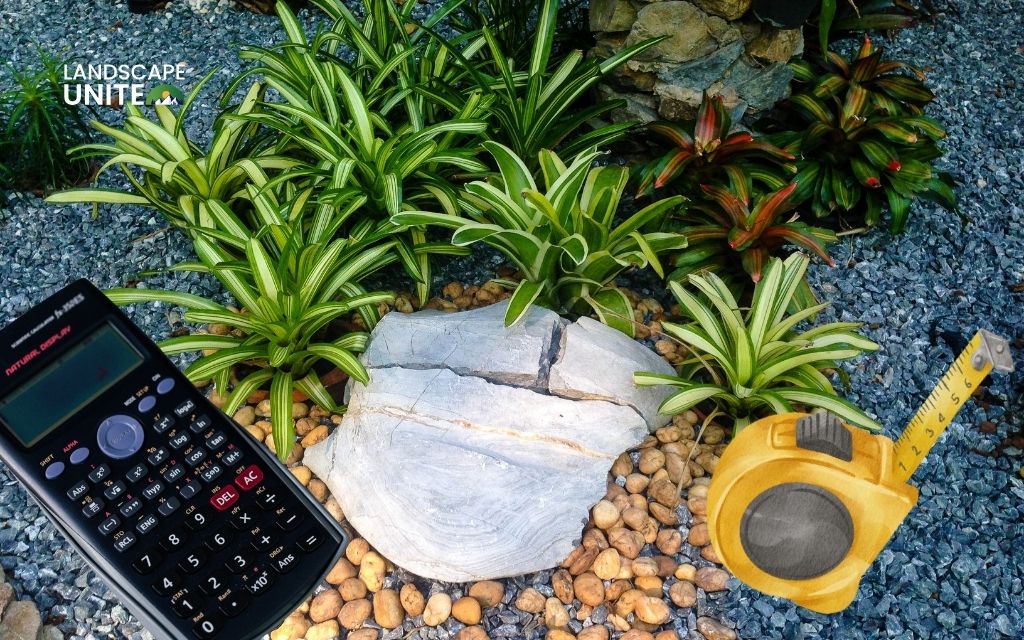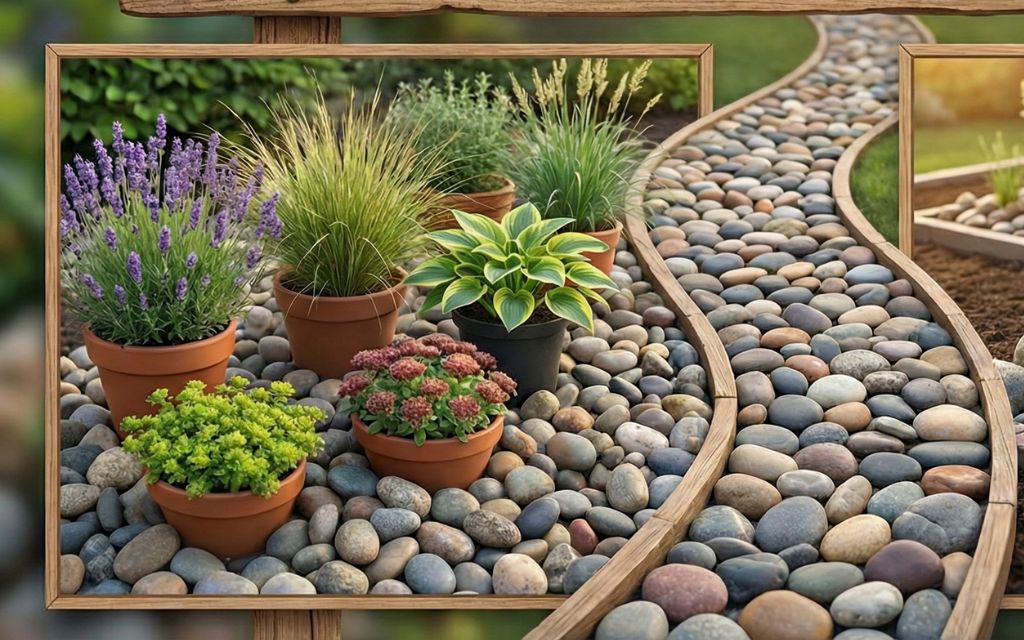Nothing brightens a garden quite like the vibrant, show-stopping blooms of hibiscus plants. These tropical beauties bring exotic charm to any landscape with their bold colors and impressive flowers.
However, as temperatures begin to drop, many gardeners face a common dilemma: how to protect these heat-loving plants through the harsh winter months.
This comprehensive guide provides clear, step-by-step instructions for how to winterize hibiscus, both tropical and hardy hibiscus, ensuring your plants not only survive winter but return with vigorous growth and abundant blooms next spring.
Know your hibiscus type first
Understanding your hibiscus variety is crucial for successful winterization. The 2 main types require completely different care approaches during cold months.
| Type | Cold Tolerance | Need Winterization? |
| Tropical Hibiscus | Zone 9–11 only | ✅ Yes (bring indoors) |
| Hardy Hibiscus | Zone 4–9 | ✅ Yes (in-ground care) |
Tropical hibiscus (Hibiscus rosa-sinensis) features shiny, dark green foliage and produces flowers continuously in warm weather. These plants cannot tolerate temperatures below 50°F and must be brought indoors in most US climates.
Hardy hibiscus (Hibiscus moscheutos), also called rose mallow, has larger, heart-shaped leaves with a matte finish and dies back naturally in fall. These perennial varieties can withstand freezing temperatures with proper protection.
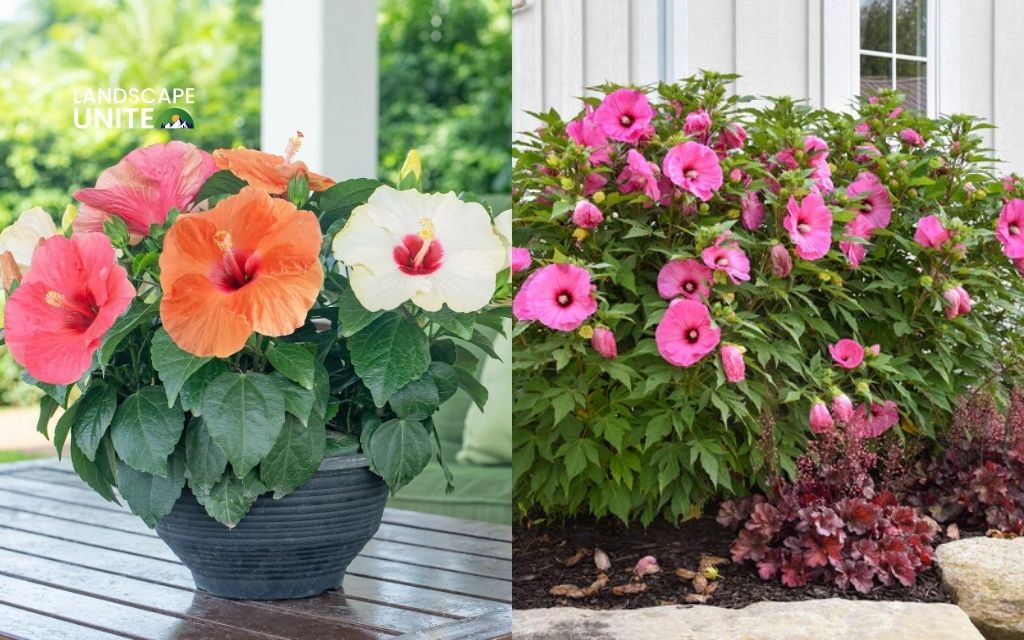
How to winterize tropical hibiscus (in pots or containers)
Follow these essential steps to ensure your plant remains healthy during dormancy.
Step 1: Move indoors before first frost
Timing is critical when transitioning tropical hibiscus indoors. Begin monitoring nighttime temperatures in early fall, as even a light frost can damage or kill these sensitive plants.
- Place near a sunny window with at least 6 hours of light
- Keep away from drafts or heating vents
- Optionally use grow lights if natural light is low
Avoid locations near frequently opened doors, air conditioning units, or heating vents that create temperature fluctuations. If natural light is insufficient, supplement with full-spectrum LED grow lights positioned 12-18 inches above the plant.
Step 2: Prune lightly
Strategic pruning helps your hibiscus adjust to indoor conditions:
- Trim back leggy stems by ⅓ to manage shape and reduce stress
- Remove any dead or diseased growth
Focus on removing weak, spindly growth that won’t survive indoor conditions. Make clean cuts just above outward-facing nodes to encourage proper branching when spring growth resumes.
Avoid heavy pruning, as this can shock the plant during its vulnerable transition period.
Step 3: Adjust watering & fertilizing
Indoor hibiscus requires different care than outdoor growing conditions.
Reduced light and cooler temperatures slow plant metabolism, requiring careful attention to watering and nutrition.
- Water sparingly to avoid root rot
- Stop fertilizing until spring
Check soil moisture by inserting your finger 1-2 inches deep. Water only when the top inch feels dry, and ensure proper drainage to prevent waterlogged roots.
Discontinue all fertilizer applications until active growth resumes in spring, typically around March or April.
Step 4: Watch for pests
Indoor environments can harbor common houseplant pests that target stressed hibiscus plants during winter months.
- Treat spider mites or aphids early
- Use neem oil or insecticidal soap if needed
Inspect leaves weekly for tiny webs, sticky honeydew, or visible insects. Spider mites thrive in dry indoor air, while aphids cluster on new growth tips.
Address pest problems immediately with organic treatments like neem oil spray applied every 7-10 days until infestations clear.
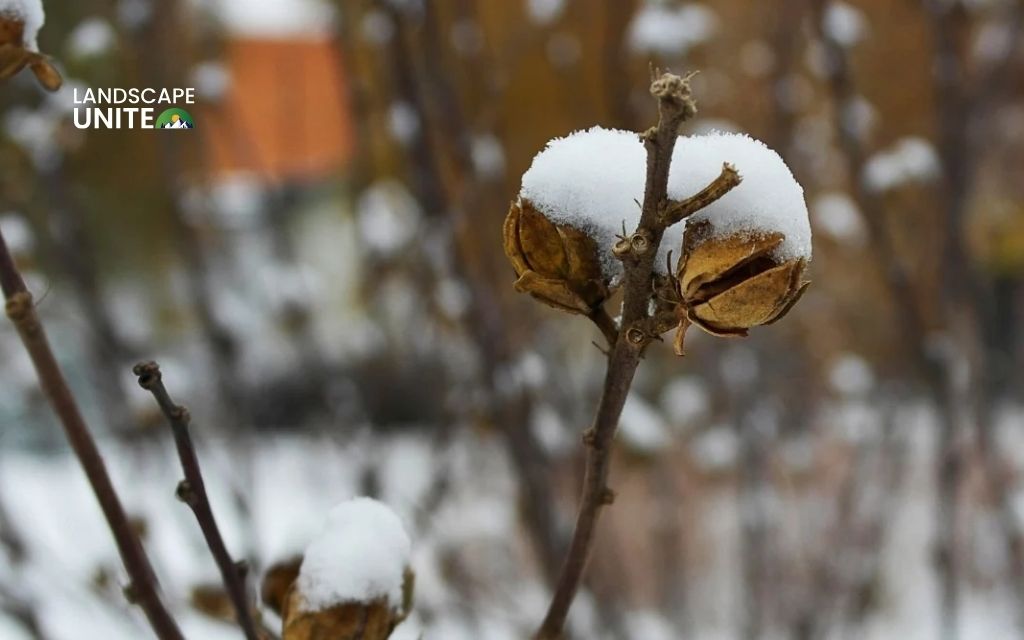
How to winterize hibiscus in the ground (hardy varieties)
Hardy hibiscus can survive winter outdoors with proper preparation. These perennial plants naturally enter dormancy but benefit from protective measures in colder zones.
Step 1: Cut back the plant
Proper timing for pruning hardy hibiscus ensures the plant has entered full dormancy before cutting begins.
- Wait until first frost turns foliage brown
- Prune stems down to 6–8 inches above ground
Allow the first killing frost to naturally trigger dormancy before pruning. This helps the plant transfer energy to its root system for winter survival.
Use clean, sharp pruning shears to make cuts at a slight angle above ground level, leaving short stubs that mark the plant’s location.
Step 2: Apply Mulch or cover
Insulation around hardy hibiscus protects the root system and crown from extreme temperature fluctuations during winter.
- Add 4–6 inches of mulch (straw, bark, or shredded leaves)
- Mound mulch over the crown of the plant
- In colder zones (4–5), cover with burlap or rose cones for extra protection
Create a protective mound extending 12-18 inches beyond the plant’s base using organic materials like shredded bark, straw, or fallen leaves.
Avoid using thick plastic covers that can trap moisture and cause crown rot. In zones 4-5, add burlap wrapping or commercial plant protectors for additional insulation.
Step 3: Water before freeze
Final preparation includes ensuring adequate soil moisture before winter dormancy begins.
- Give a final deep watering before ground freezes
- Helps roots stay hydrated during dormancy
Apply 1-2 inches of water slowly to penetrate deep into the soil around the root zone.
Well-hydrated plants better withstand winter stress and emerge stronger in spring. Complete this watering 2-3 weeks before expected ground freeze to allow proper soil absorption.
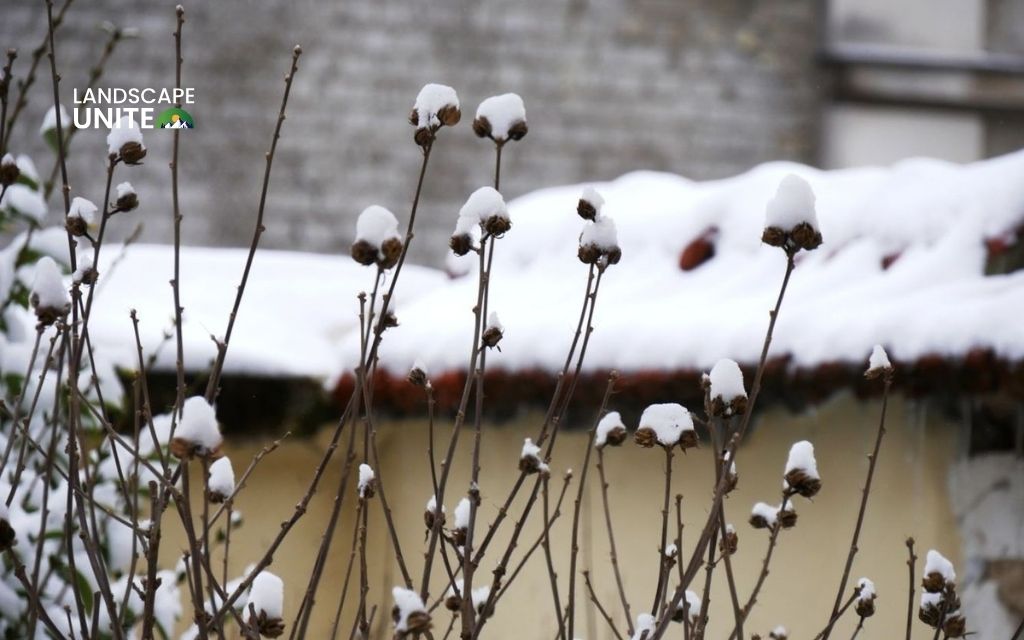
How to winterize a hibiscus tree (standard or braided)
Hibiscus trees, whether standard topiary forms or decorative braided varieties, require the same care as tropical potted hibiscus with additional considerations for their unique growth structure.
- Treat like tropical potted hibiscus
- Move indoors into a bright space
- Support trunk with a stake if needed
- Avoid drastic temperature changes
Tree-form hibiscus often has a heavier canopy that may require staking for stability during indoor placement.
Position stakes carefully to avoid root damage, and secure loosely to allow natural movement. Gradually acclimate tree hibiscus to indoor conditions over 7-10 days to prevent shock and leaf drop.
Why is winterizing hibiscus important?
Understanding the biological reasons behind winterization helps gardeners appreciate the necessity of proper cold protection for their hibiscus plants.
- Tropical hibiscus is extremely frost-sensitive
- Hardy hibiscus can survive light frost but still benefits from protection
- Proper winterization ensures healthy regrowth and vibrant blooms next spring
Hibiscus originates from warm tropical and subtropical regions where temperatures rarely drop below 60°F. Their cellular structure lacks the antifreeze compounds found in cold-hardy plants, making them vulnerable to ice crystal formation that ruptures cell walls.
Even hardy varieties benefit from protection, as extreme temperature swings can damage emerging spring growth and reduce flower production.
When to start winterizing hibiscus
- Begin before first frost in your zone
- Monitor nighttime temperatures – anything below 45°F can damage tropical varieties
- General timeframe: October – early November depending on your region
Use local frost date predictions and current weather forecasts to plan your winterization schedule.
Tropical hibiscus shows stress when temperatures drop below 50°F, with visible damage occurring around 45°F. Hardy varieties can tolerate brief temperature dips to 32°F but benefit from protection when extended freezes are predicted.
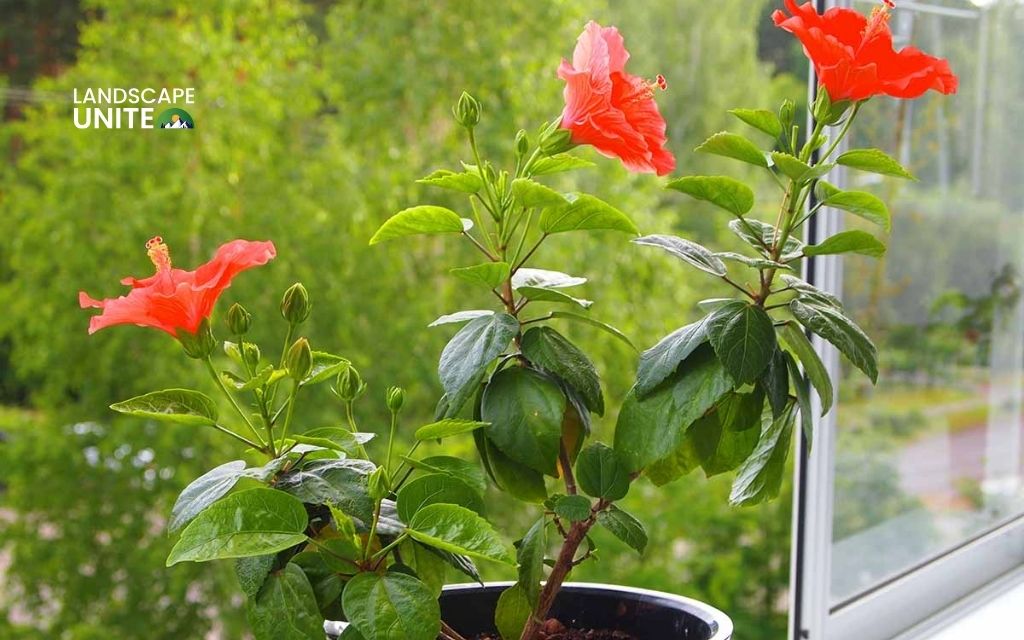
Common mistakes to avoid
Learning from typical winterization errors helps ensure successful hibiscus care throughout the cold season.
- Leaving tropical hibiscus outdoors too long
- Overwatering during dormancy leads to root rot, as reduced light and temperature slow water uptake significantly
- Using plastic covers (causes mold and overheating) traps moisture and creates harmful temperature fluctuations
- Pruning too early before dormancy begins prevents proper energy storage for winter survival
Conclusion
Winterizing your hibiscus is simple once you know the type of plant you have. Whether you’re moving tropical varieties indoors or protecting hardy types with mulch, a little preparation goes a long way. Use this guide to confidently care for your hibiscus and enjoy their stunning blooms year after year.
Learn more about seasonal plant care and discover additional winterization strategies in our comprehensive gardening library this winter.
Discover more:
How to winterize strawberry plants and protect them from winter?
How to winterize plants in 6 steps to keep your garden safe this winter?
How to winterize hydrangea plants with 6 steps every gardener should know?
How to winterize roses for maximum winter survival?
Frequently asked questions (FAQs)
Do hibiscus lose leaves in winter?
Yes, both tropical and hardy hibiscus typically lose leaves during winter. Tropical varieties may drop leaves due to indoor stress and reduced light, while hardy hibiscus naturally sheds foliage as part of dormancy. This is normal and new growth will emerge in spring.
Should I fertilize hibiscus during winter?
No, avoid fertilizing hibiscus during winter months. Plants enter dormancy and cannot process nutrients effectively, potentially leading to root burn or encouraging weak growth vulnerable to cold damage. Resume fertilizing when active growth begins in spring.
What temperature is too cold for hibiscus?
Tropical hibiscus suffers damage below 45°F and cannot survive frost. Hardy hibiscus tolerates temperatures down to -20°F in zones 4-5 with proper protection, though they benefit from mulching and covering in extreme cold.
Can I grow hibiscus indoors year-round?
Yes, tropical hibiscus can live indoors permanently with adequate light, humidity, and care. However, they typically perform better with a seasonal outdoor period during warm months. Hardy hibiscus requires winter dormancy and is not suitable for year-round indoor growing.
What if my tropical hibiscus already has frost damage?
Remove damaged leaves and stems immediately, cutting back to healthy tissue. Move the plant indoors to a bright location and reduce watering while it recovers. Many hibiscus can survive light frost damage and regrow from healthy stems in spring.
